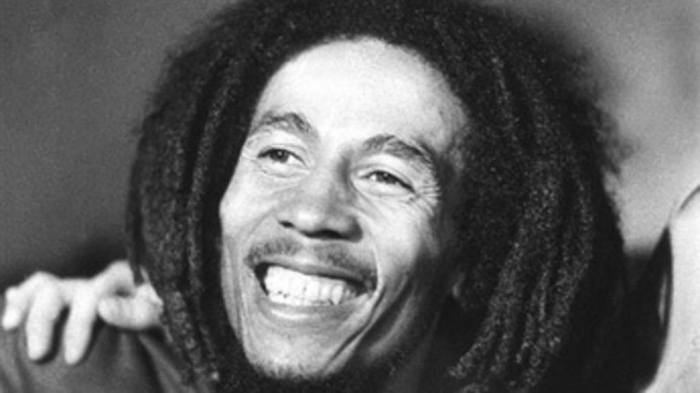Benjamin Zephaniah was a schoolboy when he sent a letter to Bob Marley along the lines of: “I’m a poet from Birmingham, nobody’s really listening to me in England, what do you think of my poems?”
Incredibly, the reggae star wrote back and told him: “Young man, Britain needs you. Keep doing what you do.”
Marley’s handwritten letter from Jamaica was one reason Zephaniah was where he was, he said on Tuesday, as he unveiled an English Heritage blue plaque on the house in Chelsea where the singer lived in 1977.
“That was a real inspiration to me,” said Zephaniah. “It really inspired me to keep doing what I was doing … at the time there was no spoken word poetry, there was no dub poetry so to read those words...”
The plaque is on the front of 42 Oakley Street, a house where Marley lived with his band the Wailers for a short time in the late 70s. When they were not recording they would make the short trip over the Albert Bridge to play football in Battersea Park.
It was while living in Oakley Street that Marley and the Wailers finished recording Exodus, the album which featured Jamming, Three Little Birds, Waiting in Vain and One Love.
Zephaniah said he was a fan of Marley when it was not so fashionable. “Certainly the Rastafarian community thought I was a bit soft. They were listening to Burning Spear and all the heavy stuff, but I liked the songs and poetry of Bob Marley. Take away the music and you get poetry.”
About 12 blue plaques are unveiled in London by English Heritage every year, celebrating figures from history. Seven doors up from Marley is one marking the Antarctic explorer Robert Falcon Scott. Across the road, at number 87, is a plaque for the Irish nationalist poet Jane Wilde, Oscar’s mother.
Other music stars of Marley’s generation with blue plaques include Jimi Hendrix, in Mayfair, John Lennon, in Marylebone, and Freddie Mercury, in Feltham.
Only 4% of the 900 plus blue plaques across London are dedicated to black and Asian figures from history.
The historian David Olusoga, a trustee of English Heritage and a blue plaques panel member, said the organisation was well aware the figure was “unacceptably low”.
He added: “Bob Marley’s plaque is testament to how our scheme is changing, as English heritage continues to work to overcome the obstacles that have led to this underrepresentation.”
English Heritage said there were a number of reasons for the low figure, including a low number of nominations and the frequent lack of historic records linking a person to a building in which they lived.
Marley is a case in point. His plaque became stuck in the planning process because he was not on the electoral register or in the phone book and getting firm evidence was tricky.
Researchers did, however, discover a court record of Marley’s arrest for cannabis possession in 1977, along with bassist Aston ‘Family man’ Barrett. Barrett’s address was 42 Oakley Street while Marley’s was given as 27 Collingham Gardens.
Anecdotal evidence has suggested Marley gave a different address to prevent the police from searching the house in Oakley Street for drugs and getting more people in trouble.
Olusoga said Marley was one of the most recognisable people to have ever lived. “What mattered to millions of people was not just that he was an undoubted musical genius, but that he was somebody who came from a life like theirs. He had been born into poverty. To millions of people in the developing world he was the first global figure from their background.”
The Guardian
More about: BobMarley
















































